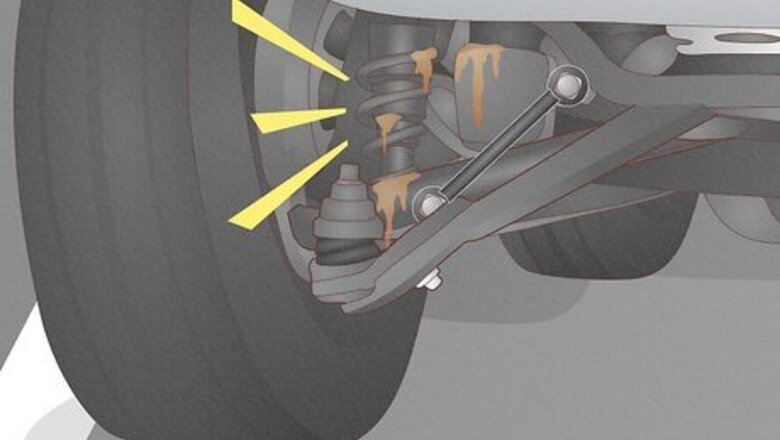
views
- Rattling from underneath your car may be caused by bad suspension, loose or damaged exhaust systems, or worn brake rotors.
- If the rattling comes from under the hood, it could be low oil levels, broken belts, damaged engine pistons, or a bad alternator.
- Rattling while you’re accelerating may be a damaged catalytic converter, worn timing belt, or a broken AC compressor.
If the Rattling is Under Your Car
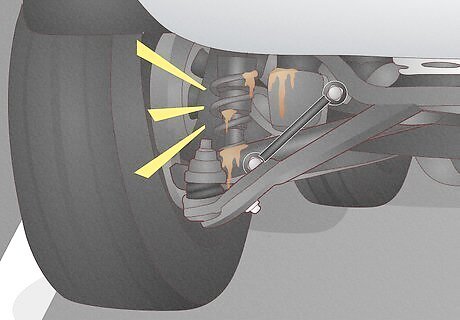
The suspension might be faulty. Ed Beery, an automotive specialist, says that “signs of suspension problems include clunking sounds when hitting holes or speed bumps.” He says other symptoms include your “vehicle bouncing after hitting bumps or holes, pulling to one side, or sitting unevenly to the ground.” The Fix: Inspect your shock absorbers and struts behind each wheel for damage, loose parts, or leaking oil. If you notice damage, have a mechanic replace them. The Cost: $1,000–5,000 USD Is it safe to drive?: Bad suspension can potentially damage your vehicle when you go over large bumps and may cause steering issues, so it’s best to have repairs done right away.

The exhaust brackets may be loose. Metal brackets hold your exhaust system under your vehicle, and they make a distinctive rattling near the back of your vehicle if they’re loose. The Fix: Check under your vehicle for any loose or broken brackets. Tighten the bolts on loose brackets. Replacing broken or rusted brackets may require welding, so it’s best to take your vehicle to a mechanic. The Cost: $100–200 USD Is it safe to drive?: Loose exhaust systems could drag on the road and cause more costly damage, so it’s best to fix them as soon as possible.
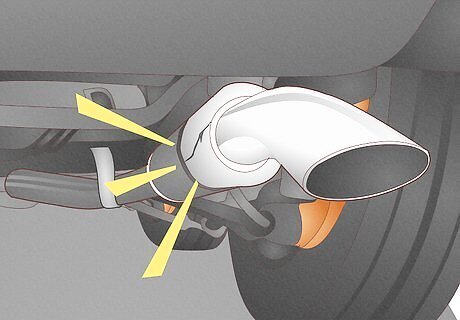
The exhaust system might be damaged. If your exhaust starts making a loud rattling noise all of a sudden, it could potentially mean there’s a rusted or cracked piece. You may also smell exhaust fumes or hear loud noises when you run your vehicle. The Fix: Inspect your exhaust for leaks or damaged areas. Patch the broken pipe or replace the damaged section. The Cost: $100–200 USD for repairing leaks, $1,000+ for replacements Is it safe to drive?: Damaged exhaust systems reduce your vehicle’s performance and can also release harmful fumes, so try to avoid driving as much as possible until you can have it repaired.
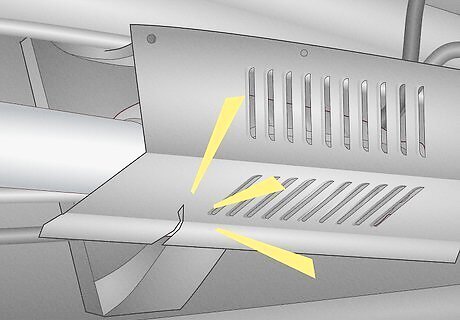
The heat shield may be loose or broken. Heat shields are metal pieces that cover your exhaust to protect other delicate parts from high temperatures. When the fasteners holding them in place rust or break, the heat shield rattles while you’re driving. The Fix: Check along your exhaust line for any large loose metal pieces. Tighten any loose hardware, or replace any worn or broken pieces. The Cost: $150–300 USD Is it safe to drive?: It’s safe to drive with a loose heat shield, but try to fix it soon so it doesn’t break any further.
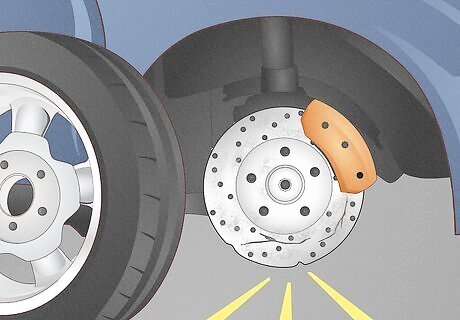
The brake rotors could be worn or warped. A rattling any time you press on the brakes, the rotors may be the culprit. Your car may also take longer to stop or it will vibrate when you’re slowing down. The Fix: Have your brakes inspected by a mechanic to find bad rotors, and have them replaced if they’re worn out. The Cost: $200–800 USD Is it safe to drive?: Worn brakes make it more difficult to stop and could cause more costly damage, so have your vehicle repaired right away.
If the Rattling is Under the Hood

There may be low oil levels. Motor oil lubricates the pieces inside of your engine, but the pieces may rattle or knock against each other if the levels drop below the recommended levels. Your engine may also run less efficiently or misfire. The Fix: Check your oil levels in your engine with the dipstick. If the oil is below the recommended level, pour in the correct motor oil for your vehicle. If there are leaks in the oil line, find and patch them. The Cost: $35–75 USD for an oil change, $300–500 USD to fix leaks Is it safe to drive?: Driving without enough oil can stress your engine parts and cause overheating. Auto specialist Ed Beery warns that “overheating is the main cause of catastrophic engine damage,” so it’s best to check the oil and fix low levels immediately.

The serpentine belt or tensioner might be broken. The serpentine belt connects your engine to various parts, like the alternator, AC, water pump, and more. If the belt or one of the tensioners it’s wrapped around has damage, then it’ll rattle whenever your engine runs. The Fix: If the belt is cracked or damaged, replace it yourself or at an auto shop. If the tensioner is damaged, have a mechanic replace the part. The Cost: $100–150 USD for belt replacement, $150–400 USD for tensioner replacement Is it safe to drive?: The serpentine belt is important for running multiple systems in your vehicle, so it’s best to get repairs right away and avoid driving.

The engine pistons may be loose. “Piston slap” happens when the old pistons wear down or if they’re smaller than the engine cylinders. Because they have extra space, they’ll rattle around whenever you’re running your engine. The Fix: Have a mechanic replace any broken pistons in your engine. The Cost: $500 USD or more Is it safe to drive?: Bad pistons can cause your engine to misfire and cause lasting damage, so avoid driving and repair the parts right away.
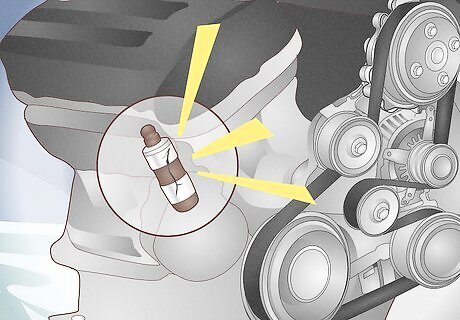
The engine’s hydraulic valve lifters might be failing. The hydraulic valve lifters move up and down in the engine cylinders to maintain oil pressure. When the lifters get stuck or fail, they don’t open properly and rattle against other pieces. This is most noticeable when your car rattles when you’re idling. The Fix: Have a professional mechanic remove and replace the old valve lifters. The Cost: $1,000–2,500 USD Is it safe to drive?: Driving with a broken lifter can negatively impact your engine performance and damage other components, so it’s best to stay off the road until you get it repaired.
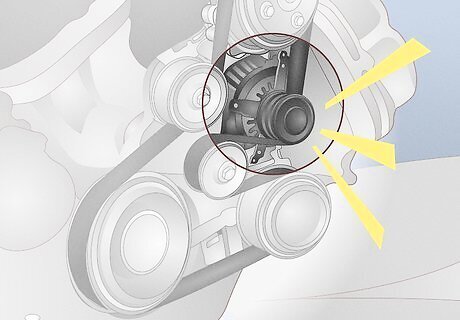
The alternator may be failing. Your alternator changes your engine power into electricity for your vehicle. As your alternator gets older and wears out, it may rattle, make your lights look dim, or drain your battery. The Fix: Replace the alternator attached to the side of your engine. If you don’t feel comfortable doing it yourself, hire a mechanic to do it for you. The Cost: $100–350 USD Is it safe to drive?: It’s best to get your alternator fixed right away so you don’t run into any electrical issues when you’re on the road.
If There’s Rattling while Accelerating
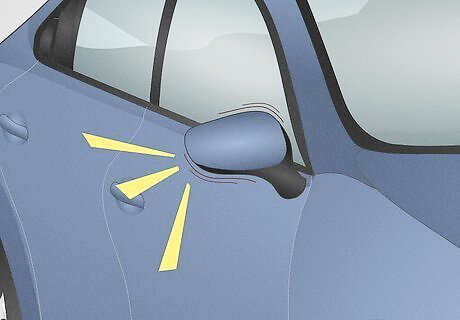
The exterior trim or hubcaps may be loose. If you only notice sounds coming from outside your vehicle as you’re driving, then damaged or broken exterior pieces may be the culprit. You may also hear a rattle or vibrating noise if your tires are worn out. The Fix: Inspect your trim pieces, mirrors, and hubcaps to see if they easily wobble back and forth. Tighten the pieces you can, and replace any parts that are broken. The Cost: up to $100 USD Is it safe to drive?: It’s best to check and fix exterior problems right away so nothing falls off while you’re on the road and puts other drivers at risk.

The catalytic converter could be broken. The catalytic converter breaks down harmful exhaust fumes before they exit your vehicle, but old filter pieces inside of it may shake or rattle as you’re driving. The Fix: Replace the catalytic converter. While you can try it at home if you’re handy with car repairs, it’s best left to an experienced mechanic. The Cost: $900–3,500 USD Is it safe to drive?: Driving with a broken catalytic converter can damage your vehicle and release harmful fumes, plus it may be illegal in your area. Avoid driving and fix the damage right away.

The timing belt might be broken. If there’s a rattling coming from your engine right when you start your car and when you speed up, it’s a sign your engine’s timing belt is the issue. The Fix: Inspect your timing belt at the front of your engine for any cracks, damage, or loose tensioners. Tighten any loose parts, and replace the timing belt if it looks damaged. The Cost: $500–1,100 USD Is it safe to drive?: Driving with a bad timing belt can impact your engine’s performance and cause damage, so have it repaired right away.
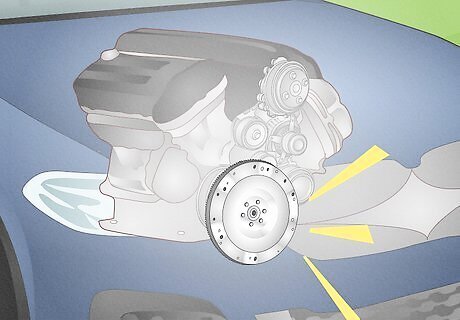
The flywheel or flexplate may be worn or cracked. Flywheels and flexplates connect your vehicle’s engine to the transmission. When they’re old or broken, they may wobble and create a rattling sound near your engine. The Fix: Replace the plate if it looks damaged and you’re experienced with repairing cars. Otherwise, take it to your local mechanic to get fixed. The Cost: $100–500 USD Is it safe to drive?: Because your flexplate or flywheel can make it more difficult to shift gears, it’s important to drive as little as possible and get it repaired quickly.
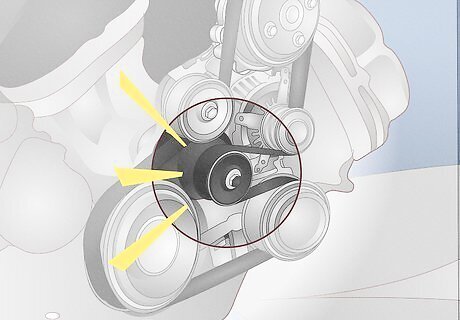
The AC compressor clutch could be faulty. The compressor clutch provides power for the AC and fans in your vehicle. Automotive specialist Ed Beery says it could be the culprit if, “The clutch clicks or bangs but does not engage when the AC is turned on.” The Fix: Check your car’s AC compressor for any loose pulleys or clutches. Tighten them with a wrench or replace them if they’re worn or broken. The Cost: about $1,100 USD Is it safe to drive?: It’s safe to drive with a bad clutch, but it may affect how well your AC or fans work.
If the Rattling is Inside Your Car

There might be loose components. Checking for loose parts yourself saves time and money at the mechanic. It could be as simple as something moving around inside your glove box or loose screws. The Fix: Check around your vehicle’s interior for loose parts, like the glove box, window cranks, door locks, and dashboard knobs. Tighten what you can with a screwdriver or wrench. The Cost: $10 USD or more for replacement parts Is it safe to drive?: It’s safe to drive as long as the important control knobs aren’t loose or broken.

The window seals may be loose. Over time, the rubber seals or the window channels inside the door may wear away and make your windows loose. The Fix: For window seals, pry off the old seal at the bottom of the window and install a new replacement. For damaged channels, have a mechanic remove the door panel and repair the piece. The Cost: $100–500 USD Is it safe to drive?: While it’s safe to drive, it’s best to get the window fixed quickly so it doesn’t get looser or fall.




















Comments
0 comment